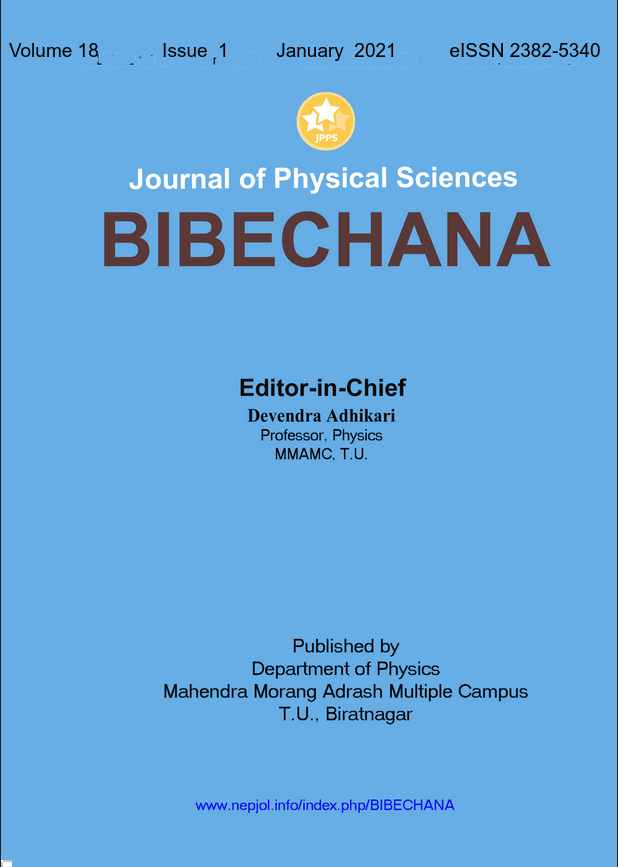Surface modification of polyamide by 50 Hz dielectric barrier discharge (DBD) produced in air at atmospheric pressure
DOI:
https://doi.org/10.3126/bibechana.v18i1.27650Keywords:
Contact Angle, Surface Free Energy, Hydrophilicity, Wettability, Electrical Characterization, Optical CharacterizationAbstract
Industrial applications of the dielectric barrier discharge (DBD) have a long tradition. However, lack of understanding in some of its fundamental issues, such as stochastic behaviors, is still a challenge for DBD researchers. The work was carried out at line frequency, 15 kV, and at atmospheric pressure. This work focuses on the study of the electrical and optical characteristics of DBD at atmospheric pressure to determine a suitable condition for utilization of the device for surface modification of polyamides (PA) (Nylon 6/6). In this work, films were treated by dielectric barrier discharge and the effects on the morphology and chemistry of the material were studied. Surface characteristics were examined via contact angle measurements and SEM. The wettability tests revealed the improvement of the hydrophilic character of the surface of polyamide films as the water contact angle measured after the plasma treatments significantly decreased. The corresponding changes of the total surface energy revealed a significant increase in its polar component. The improvement of the wettability of PA strongly depends on the treatment time. The outcomes of the experiments proved that the modification of surface properties via plasma treatment reach its saturation point after a certain treatment time thus reducing the necessity of further treatment.
BIBECHANA 18 (1) (2021) 19-25
Downloads
Downloads
Published
How to Cite
Issue
Section
License
This license enables reusers to distribute, remix, adapt, and build upon the material in any medium or format for noncommercial purposes only, and only so long as attribution is given to the creator.




